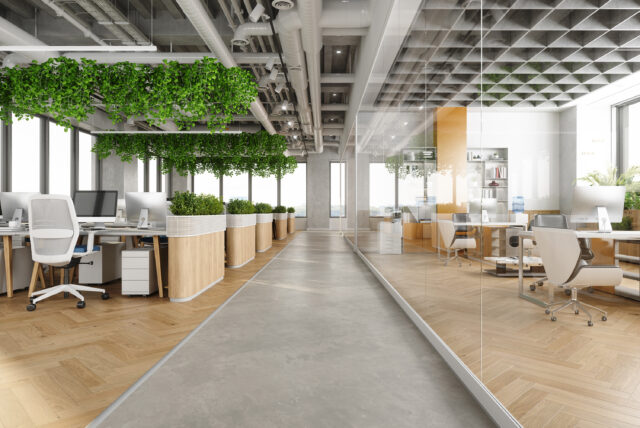The WELLness Revolution: Prioritizing Occupant Health in Building Design

Imagine a world where buildings actively contribute to the health and well-being of their occupants. The WELL Building Standard is leading this revolution and transforming the way we think about and design spaces. WELL places human health and wellness at the forefront of building design, ensuring that the spaces in which we work, live, and play promote holistic health and sustainability. Below, we delve into the principles of the WELL Building Standard, uncover its unique benefits and challenges, and explore how it is reshaping our built environment.
What Is the WELL Building Standard?
The WELL Building Standard is an international rating system that takes a holistic, people-first approach to building design, emphasizing the health and well-being of occupants. Developed by the International WELL Building Institute (IWBI), it is a performance-based certification that requires audits and third-party testing to verify buildings meet quality requirements across a range of indoor environmental categories. By integrating 108 features across 10 key concepts—air, water, nourishment, light, movement, thermal comfort, sound, materials, mind, and community—the rating system serves as a comprehensive guideline for improving the quality of indoor spaces. Projects pursuing WELL certification earn points based on these features and can achieve one of four certification levels: Bronze, Silver, Gold, or Platinum.
![]()
How Is WELL Different From LEED?
While both WELL and LEED (Leadership in Energy and Environmental Design) certifications aim to improve building standards, their focuses differ significantly. WELL may be the lesser known of the two programs, but it is leading the healthy building movement. Centered on the health and well-being of building occupants, WELL utilizes medical and scientific data to establish connections between building environments and occupant health. The standard was based on research conducted at the Cleveland Clinic and created in collaboration with physicians, scientists, and industry professionals. Additionally, WELL is third-party verified and performance-based in nature, involving rigorous criteria, post-construction audits, and ongoing testing and compliance. In contrast, LEED is more design- and metric-driven, primarily concentrating on energy efficiency and environmental impact, but without the same level of mandatory post-construction performance verification required by WELL.
The Benefits of WELL Certification
Incorporating WELL into building design has profound benefits for occupant well-being. Enhanced air and water quality, thermal comfort, natural light, and biophilic design elements contribute to improved mental and physical health. These features can lead to increased productivity, creativity, and efficiency; reduced rates of absenteeism; and higher satisfaction among building occupants. Given that people spend approximately 90% of their time indoors, these benefits are significant. Moreover, building owners that invest in WELL certification are better positioned to attract and retain top-notch talent as the employer is prioritizing the health and well-being of employees.
Challenges of Implementing the WELL Building Standard
However, achieving WELL certification is not without its challenges. The initial costs of incorporating WELL features can be substantial, and maintaining certification involves ongoing expenses related to post-occupancy monitoring and building performance verification. In addition, the extensive documentation required from multiple entities—owners, architects/engineers, and contractors—for certification necessitates precise tracking and increased design time. These processes demand considerable commitment as well as a thorough understanding of the standard’s technical requirements and may influence property resale value and ongoing certification under new ownership. Furthermore, educating clients on the return on investment is vital, as they must understand the long-term benefits, including potential increases in property value and occupant satisfaction, and justify the higher upfront and recurring costs associated with WELL certification.
Long-Term Impact and Future Trends
As we navigate a post-pandemic landscape, the shift toward designing healthy buildings that prioritize occupant well-being becomes increasingly critical. This trend will likely drive the AEC industry to balance health and sustainability in building design, addressing concerns such as air quality, mental resilience, and overall health. Emphasizing the importance of post-occupancy monitoring and ongoing attention to building performance, along with promoting awareness and education about the benefits and requirements of WELL certification, will be essential in this transformation and in encouraging widespread adoption across sectors such as healthcare and education.
Biophilic design, which connects occupants to nature through elements such as natural materials and patterns, plants, water features, and daylight, is expected to become increasingly prevalent in WELL-certified projects. This approach not only reduces stress levels and enhances performance but also creates an environment that strengthens the mental well-being of occupants and potentially their immune systems, contributing to long-term health benefits.
By embracing the principles of the WELL Building Standard, we can create environments that not only support but also enhance human health and well-being, setting a new benchmark for building design in the future. At LaBella, we understand the key concepts of WELL and the importance of providing spaces that promote holistic health and sustainability, offering full-service solutions that include architectural/engineering design that focuses on indoor environmental quality, air and water quality testing, daylight modeling and lighting design, hazardous building materials mitigation, and site selection and remediation. Our WELL Accredited Professionals can help incorporate health and wellness measures into your building’s design and operations as well as lead your projects through the WELL certification process.

About the Author
Jessica Kruse, AIA, CDT, LFA, LEED GA, WELL APProject Architect
Insights by Jessica Kruse, AIA, CDT, LFA, LEED GA, WELL AP:
Jessica is a licensed architect with over 15 years of experience, focusing on higher education, municipal, and sustainable design projects. Her role on projects includes conceptual design, construction documents, construction administration, and sustainable design. Jessica is skilled at 3D modeling for conceptual communication and exploration, as well as BIM production for coordinated, cohesive construction document sets.
